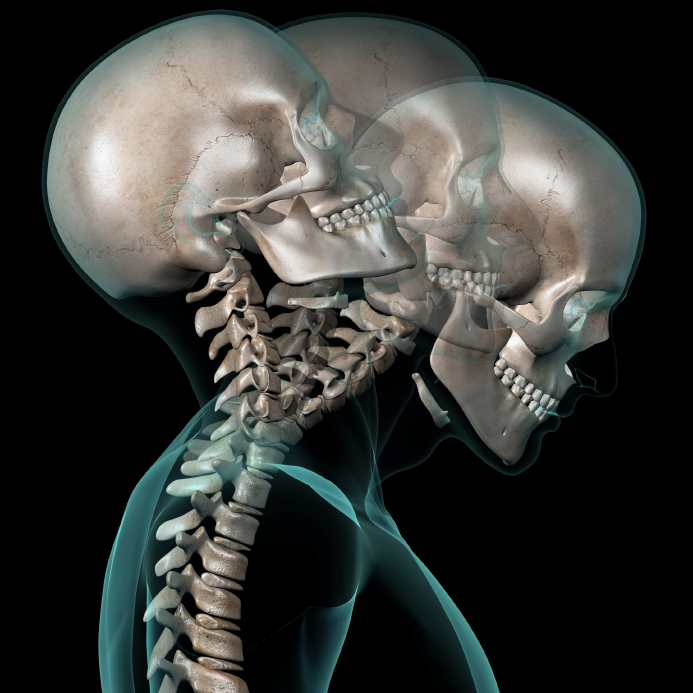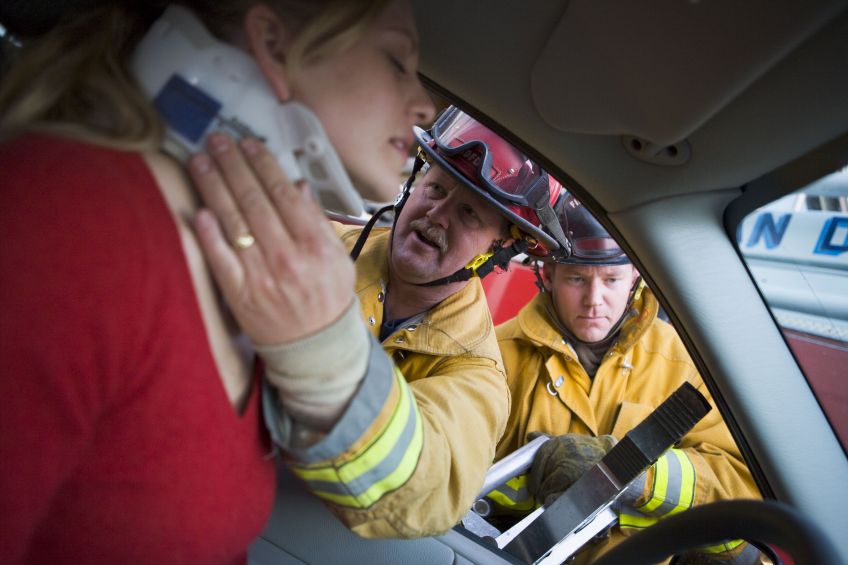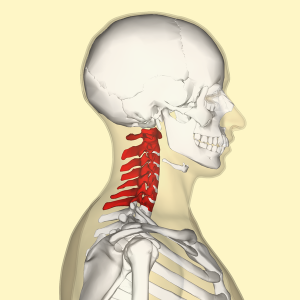Whiplash

Tips For Treating Whiplash
- Seek treatment from a Physical Therapist ASAP following a CAD accident that causes the symptoms of Whiplash.
- Be pro-active and ask your doctor to prescribe Physical Therapy.
- Put the headrest in your car at a level that is equal to the middle of the back of your head. If it is too low, it acts as a fulcrum and your head will snap over top of it making the injury worse.
- Do your exercises daily. Frequency of stretching and strengthening is much more important than intensity in the acute phase of healing.
- Use hot showers and heat packs prior to exercises and ice treatments afterwards.
The Cause and Treatment of Whiplash
Whiplash is the most common non-fatal car crash injury. One car slides into the back of another car. The front driver is suddenly thrown back and sideways. When the neck accelerates and decelerates too quickly for the soft tissue structures to control the motion, whiplash injuries occur.
While whiplash is primarily associated with car accidents, other traumas to the neck can cause whiplash. In fact, it was originally associated with train wrecks and referred to as “railroad” spine.” On any given day of the week, orthopaedic Physical Therapists successfully treat cases of neck pain that are diagnosed as “Whiplash.”
Symptoms of Whiplash
After an accident, whiplash symptoms may occur immediately or appear after a period of time.

Symptoms are vastly different in all people. Some people will experience one symptom while others will experience a combination of the following: pain, muscle spasm, reduced range of motion, headaches, loss of concentration, weakness, jaw pain (TMJ), and referred symptoms into the upper extremities.
The Anatomy of the Neck
 The Cervical spine (C-spine) consists of 7 bones or vertebrae. The vertebrae are held together by “leather like” ligaments. The upper most portions consist of two oddly shaped vertebrae called the Atlas (C1) and Axis (C2). These two vertebrae are responsible for almost all of the rotational motion and approximately 50% of the entire C-spine movement. The remaining 5 vertebrae are designed with facet joints that are angled to allow side bending, flexion and extension of the C-spine.
The Cervical spine (C-spine) consists of 7 bones or vertebrae. The vertebrae are held together by “leather like” ligaments. The upper most portions consist of two oddly shaped vertebrae called the Atlas (C1) and Axis (C2). These two vertebrae are responsible for almost all of the rotational motion and approximately 50% of the entire C-spine movement. The remaining 5 vertebrae are designed with facet joints that are angled to allow side bending, flexion and extension of the C-spine.
The vertebrae are separated from the others by a fluid filled disc. The disc acts as a shock absorber and helps to dissipate the different forces that are encountered during every day activities.
Whiplash Injuries
The extreme speed of the CAD (Cervical acceleration/deceleration) injury moves the joints beyond their limits and causes damage to the ligaments that hold them together and the muscle structure reflexively contracts violently in an attempt to protect the involved area causing a range of whiplash symptoms.
Neck Pain and Stiffness – Soft tissue injuries resulting in neck pain and stiffness are the most common whiplash injuries treated in Physical Therapy. Sometimes the symptoms may extend into the Thoracic spine paraspinal musculature and/or the upper extremities.
Inflammation – Whiplash symptoms can worsen with time due to inflammation. When the muscles contract at the force level associated with this type of condition, they damage themselves and lead to the intramuscular “knot” (theorized to be damage to the actin and myosin filaments). These knots in the muscles or trigger points cause pain and other symptoms through the involved musculature.
Headache Pain – Many people suffer from headache pain associated with the muscle spasm of the C-spine paraspinal muscles and larger neck muscles. The muscle structure inserts into the periosteal covering of the skull and “pulls” on it when there is muscle spasm. This often times leads to headache pain that radiates from the back to the front and a “pressure” headache is felt behind the eye.
TMJ – When all of the neck muscles contract violently as a result of injury, the muscles that attach to the mandible may be impacted, causing TMJ problems.
Concussions – Patients suffering from a neck trauma that causes whiplash should also be screened for symptoms associated with a concussion.
Paralysis – In the most severe and worst case scenario, the person involved in the incident that lead to the symptoms could be paralyzed secondary to damage to the spinal cord or death could occur if the upper most portions of the cord are involved.
Treating Whiplash Symptoms
Whiplash is treated in the acute, sub-acute and chronic state. In most cases, patients should experience significant improvement in their symptoms and functional level. RICE – The RICE (Rest Ice Compression Elevation) principle should be utilized to control the pain and inflammation of soft tissue injuries. The patient doctor may prescribe NSAIDs and possibly pain medication and/or muscle relaxer medication.
Techniques and Modalities – Skilled Physical Therapists utilize hands-on techniques and use modalities (e.g. ultrasound, electrical stimulation, traction) to significantly reduce symptoms and speed recovery.
Exercises to Increase Blood Flow – Physical Therapist will prescribe a specific set of exercises that will enhance neuromuscular activity and blood flow at the injury site. The increased blood flow will help to remove the metabolic by-products that are produced when the body is hurt. These by-products act as a toxin in the area and irritate the nerves, which in turn cause pain and spasm. The goal of Physical Therapy is to break this pain cycle and enable the patient to move more freely and easily, helping to reduce the spasm.
Cervical Collar – The use of a cervical collar initially might help to reduce the pain and spasm, but if it is worn for too long the neck muscles might weaken and become dependent on the collar.
As treatment progresses or if it is initiated in the sub-acute or chronic stage of healing, the treatment goals are more concerned with restoring the pre-injury status of strength, motion and function. Controlling pain and inflammation are an integral part of all Physical Therapy treatments regardless of the stage of healing. Early intervention by a skilled Physical Therapist can greatly reduce the symptoms and shorten the amount of time it takes for someone to return to their pre-injury status.
























